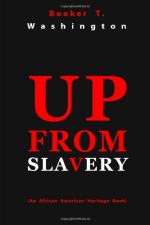It was my aim from the first at Tuskegee to not only have the buildings erected by the students themselves, but to have them make their own furniture as far as was possible. I now marvel at the patience of the students while sleeping upon the floor while waiting for some kind of a bedstead to be constructed, or at their sleeping without any kind of a mattress while waiting for something that looked like a mattress to be made.
In the early days we had very few students who had been used to handling carpenters’ tools, and the bedsteads made by the students then were very rough and very weak. Not unfrequently when I went into the students’ rooms in the morning I would find at least two bedsteads lying about on the floor. The problem of providing mattresses was a difficult one to solve. We finally mastered this, however, by getting some cheap cloth and sewing pieces of this together as to make large bags. These bags we filled with the pine straw—or, as it is sometimes called, pine needles—which we secured from the forests near by. I am glad to say that the industry of mattress-making has grown steadily since then, and has been improved to such an extent that at the present time it is an important branch of the work which is taught systematically to a number of our girls, and that the mattresses that now come out of the mattress-shop at Tuskegee are about as good as those bought in the average store. For some time after the opening of the boarding department we had no chairs in the students’ bedrooms or in the dining rooms. Instead of chairs we used stools which the students constructed by nailing together three pieces of rough board. As a rule, the furniture in the students’ rooms during the early days of the school consisted of a bed, some stools, and sometimes a rough table made by the students. The plan of having the students make the furniture is still followed, but the number of pieces in a room has been increased, and the workmanship has so improved that little fault can be found with the articles now. One thing that I have always insisted upon at Tuskegee is that everywhere there should be absolute cleanliness. Over and over again the students were reminded in those first years—and are reminded now—that people would excuse us for our poverty, for our lack of comforts and conveniences, but that they would not excuse us for dirt.




